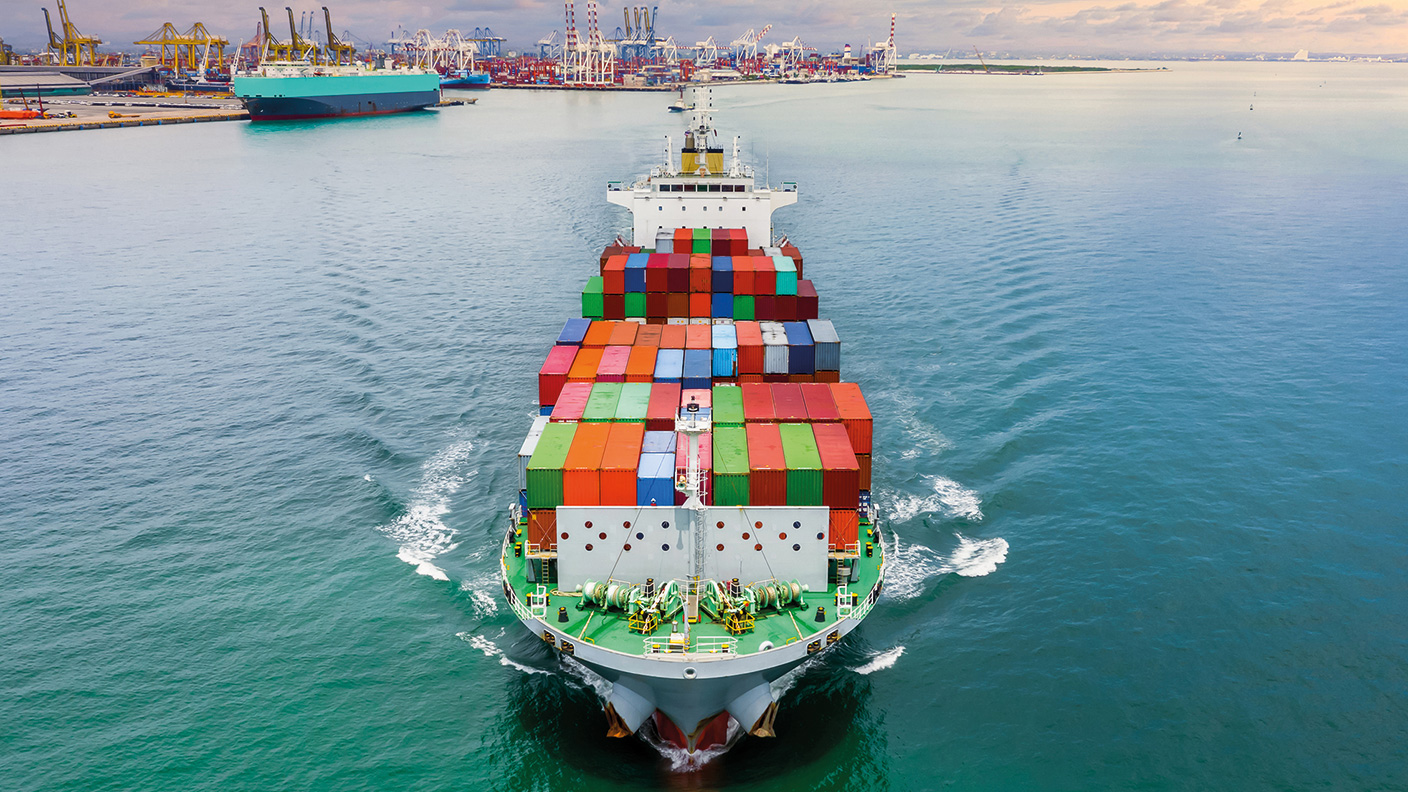Two shipping funds to buy for steady income
Returns from owning ships are volatile, but these two investment trusts are trying to make the sector less risky.


If I had to find an adjective to describe the global shipping industry, I would go for “volatile”. Measures of shipping rates such as the Baltic Dry Index show that revenues from owning ships can fluctuate wildly.
In the past, investors worldwide have lost a lot of money in this sector. In 2009, a survey by data firm Scope found 17 funds in the German shipping fund sector were close to bankruptcy. Another 70 were struggling to survive. The sector has improved since then, but it hasn’t fully recovered.
London’s first shipping funds
So it’s probably not surprising that we had to wait until 2018 for the first shipping fund, Tufton Oceanic (LSE: SHIP), to list on the London stockmarket. This fund now has a competitor, Taylor Maritime Investments (LSE: TMI), and both are now trading at a large premium to their net asset value (NAV). Does that tell us that these funds have succeeded in making a volatile sector boring?
MoneyWeek
Subscribe to MoneyWeek today and get your first six magazine issues absolutely FREE

Sign up to Money Morning
Don't miss the latest investment and personal finances news, market analysis, plus money-saving tips with our free twice-daily newsletter
Don't miss the latest investment and personal finances news, market analysis, plus money-saving tips with our free twice-daily newsletter
Certainly, both funds have worked hard to reduce risk. They don’t use lots of complex debt. They tend to own straightforward ships such as bulk carriers and container ships. Crucially, they have both focused on a more active ship model: they’ll buy cheap ships, work them hard and then if necessary trade them out.
Additionally, most of the leases seem to be of shorter durations, which means they aren’t tied to one big client. For example, Tufton’s list of assets show the majority of its ships will come off charter in 2023 or 2024. Short-term leases are both an advantage (they show us when the shipping cycle waxes and wanes) and a disadvantage (they’ve got to find someone else to charter them).
Tufton is targeting a recently revised dividend yield of 6.7% which it expects to be covered 1.7 times over the next 18 months. The net yield on the ships in its portfolio is running at around 14%. Recent trading looks to be on the up, as the shipping market booms after the pandemic: NAV rose 10% over the quarter to 30 June to $1.158 per share. The fund also released numbers suggesting its assets are holding their value on the resale market: it sold the containership Kale for $21.5m, an internal rate of return of 31% and a 70% premium to depreciated replacement cost.
Taylor Maritime is the new kid on the block. It raised $253.7m when it floated in May 2021, and subsequently raised another $75m. It focuses on smaller second-hand bulk carriers and its seed portfolio held 23 ships with an average age of 11 years and an estimated remaining life of 17 years. It has since acquired nine more. The first quarterly NAV was $1.1263, a 15% increase since the fund’s launch. This was driven by a 10.5% ($33.3m) increase its portfolio’s value. The manager reports that charterers are seeking longer-term contracts in expectation of rising charter rates. Given this backdrop, it’s not surprising that its ships are producing gross cash yields of around 20%.
A convincing case
The appeal of both funds is clear. They offer a strong, asset-backed stream of regular cash dividends in excess of 5% a year. Operating yields are well in excess of those single-digit numbers, which could imply increased payouts in time. The underlying assets are traded on a global market, so investors can take comfort from their second-hand values.
Times are good at the moment, but rates usually go into freefall for a while when the economy turns. The test will be whether the funds have managed potential volatility by picking the right ships, and whether they can keep paying out the dividends if those assets can’t be leased out against a backdrop of plunging capital values. Longer-term, climate change policies are also a concern. If owners must update their fleets due to new emissions regulations, that could cut into the resale values for the wrong sort of ships.
Get the latest financial news, insights and expert analysis from our award-winning MoneyWeek team, to help you understand what really matters when it comes to your finances.

David Stevenson has been writing the Financial Times Adventurous Investor column for nearly 15 years and is also a regular columnist for Citywire.
He writes his own widely read Adventurous Investor SubStack newsletter at davidstevenson.substack.com
David has also had a successful career as a media entrepreneur setting up the big European fintech news and event outfit www.altfi.com as well as www.etfstream.com in the asset management space.
Before that, he was a founding partner in the Rocket Science Group, a successful corporate comms business.
David has also written a number of books on investing, funds, ETFs, and stock picking and is currently a non-executive director on a number of stockmarket-listed funds including Gresham House Energy Storage and the Aurora Investment Trust.
In what remains of his spare time he is a presiding justice on the Southampton magistrates bench.
-
 Metals and AI power emerging markets
Metals and AI power emerging marketsThis year’s big emerging market winners have tended to offer exposure to one of 2025’s two winning trends – AI-focused tech and the global metals rally
-
 8 of the best houses for sale with beautiful fireplaces
8 of the best houses for sale with beautiful fireplacesThe best houses for sale with beautiful fireplaces – from a 15th-century cottage in Kent to a 17th-century palazzo in Oxfordshire
-
 Metals and AI power emerging markets
Metals and AI power emerging marketsThis year’s big emerging market winners have tended to offer exposure to one of 2025’s two winning trends – AI-focused tech and the global metals rally
-
 8 of the best houses for sale with beautiful fireplaces
8 of the best houses for sale with beautiful fireplacesThe best houses for sale with beautiful fireplaces – from a 15th-century cottage in Kent to a 17th-century palazzo in Oxfordshire
-
 King Copper’s reign will continue – here's why
King Copper’s reign will continue – here's whyFor all the talk of copper shortage, the metal is actually in surplus globally this year and should be next year, too
-
 Luana Lopes Lara: The ballerina who made a billion from prediction markets
Luana Lopes Lara: The ballerina who made a billion from prediction marketsLuana Lopes Lara trained at the Bolshoi, but hung up her ballet shoes when she had the idea of setting up a business in the prediction markets. That paid off
-
 British blue chips offer investors reliable income and growth
British blue chips offer investors reliable income and growthOpinion Ben Russon, portfolio manager and co-head UK equities, ClearBridge Investments, highlights three British blue chips where he'd put his money
-
 Coreweave is on borrowed time
Coreweave is on borrowed timeAI infrastructure firm Coreweave is heading for trouble and is absurdly pricey, says Matthew Partridge
-
 Renewable energy funds are stuck between a ROC and a hard place
Renewable energy funds are stuck between a ROC and a hard placeRenewable energy funds were hit hard by the government’s subsidy changes, but they have only themselves to blame for their failure to build trust with investors
-
 Profit from document shredding with Restore
Profit from document shredding with RestoreRestore operates in a niche, but essential market. The business has exciting potential over the coming years, says Rupert Hargreaves